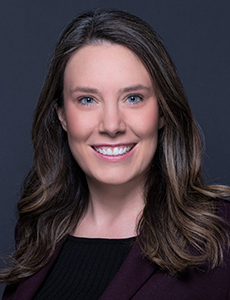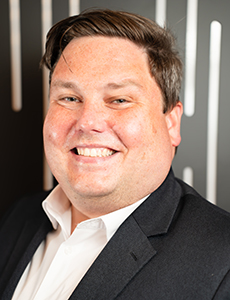5 Ways Health Care Transformation Is Impacting Insurance

Change in health care is believed to be an essential step in improving patient health. Breakthroughs in modern medicine, advancements in technology and a patient-centered model all contribute to the end goal of creating a health care industry that services its patients better.
But each innovation in health care brings with it a series of questions: What role will technology play in the long run? How will regulatory change influence care? Where are patients going for their medical needs?
Most importantly, how will these innovations impact insurance?
“With changes to the health care model come changes to how we underwrite,” said Dennis Cook, chief liability officer, IronHealth, Ironshore’s Healthcare Unit.
“Exposures change, losses change — insurers are watching to see what trends will impact insurance the most.”
Kevin Dean, chief underwriting officer, liability products, IronHealth, Ironshore’s Healthcare Unit, said M&A deals, advancements in technology and the way patients seek medical care are playing a big part in the current health care underwriting landscape.
“These trends are interacting with each other as well, driving further change in both health care and insurance.”
Here are five ways transformation in the health care industry is impacting insurance.
1) M&A activity remains very strong in the health care sector.
A combination of financial pressure and health care reform influences the way providers and payors collaborate to deliver care. Hospital systems are coming together, through mergers and acquisitions, in order to create alliances and build healthy communities.
“M&A activity is happening across the health care spectrum, whether that be in the life science world, senior care or hospitals,” said Cook.
“As an underwriter, you have to think about both sides of the transaction when you may only be working on one side of it,” he said.
Every transaction can come with its own additional liability risks — particularly on the side of the purchaser. When an M&A deal goes through, the purchaser is agreeing to take on the old liabilities and potential malpractice risks of the acquired facility.
It’s also agreeing to take on any financial stress the acquired facility might have.
“Any M&A opens up uncertainties for the insurer,” Dean said. “How much information do we have about the facility being acquired? How do we know to what extent they’ve done their due diligence? What are their old liabilities and were they covered? If not, we have to figure out how to proceed with the transaction.”
M&As aren’t a new venture for health care facilities, but they are increasing in frequency. The added risks involved even have some in the insurance space pulling back.
“What you’re starting to see is carriers requiring the insured to take more risk on the acquisition,” said Cook.
“Carriers in certain spaces are saying, ‘Without knowing the loss history of the previous owner, we’re not going to look at it.’ Others are requiring the purchaser to take higher retentions or pay higher premiums for acquisitions.”
2) Financial distress for the health care industry means more liability risk for insurers to contend with.
Bankruptcies, receiverships and other financial stressors are leading to more hospital closures. This is true in cases of smaller hospitals and senior care centers, where the supply is greater than demand.
“The number of centers providing care has increased in order to take in patients reaching an age where they might need assisted living, but many in that population are choosing to live on their own longer,” explained Cook.
“So, the supply is there but demand isn’t.”
Additionally, the changing regulatory landscape is placing a burden on health care facilities. Hospitals have seen steeper fines and penalties in recent years when they do not meet legal standards set in place. Those facing liability lawsuits could potentially be on the line for larger jury awards, as well.
“We saw an entity with a verdict that exceed $25 million. They didn’t have the insurance to cover it, and now they’re facing bankruptcy,” said Cook.
He added that a large fine or jury award can often lead to further financial distress, because insurance prices are likely to go up after an incident: “And if the facility is not insured, they could lose their business,” he said.
The health care industry is not alone in seeing these million-dollar verdicts; with the opioid epidemic looming, pharmaceutical companies are paying the price.
“Pharmaceutical companies are facing the prospect of truly significant loss which they might not be able to absorb,” said Dean.
3) At-home devices used to monitor patients have opened the door to end-user risk.
Technology advancement continues to play a key role in how health care is administered, and physicians and other care providers are gaining more and more access to patient data thanks to remote collection of information.

Kevin Dean, chief underwriting officer, liability products, IronHealth, Ironshore’s Healthcare Unit
“Providers can collect patient data through wearable technology and monitor patients proactively in the hospital,” explained Dean, “or they can passively monitor them while the patients are at home.”
Medical devices used in the home can run the gamut in complexity, from small devices used to administer first aid to sophisticated devices used to deliver advanced medical treatment. They also vary in size, from something as small as a handheld device to large machines.
Devices that track and monitor patients in their home add to the overall health care experience. But putting this technology in the hands of the end user can lead to questions surrounding liability: If the provider fails to explain the device properly, and the device fails, who’s at fault? What if the device is hacked while in the patient’s home — is that on the patient or the care facility?
“Underwriters must think about how the end users are interacting with each device,” said Dean. “We have to think about data safety, device hacking and about the chances of others interfering with it.”
Further, the underwriter needs to be aware of any regulatory requirements for a device. From the clinical trial to the very first roll out of a new technology, is the hospital or care facility meeting each regulatory step to get the device approved?
“As hospitals push devices into the hands of the end user, we have to consider that there is less training than we would have if a health care provider managed the care,” Dean said.
4) Health care technology advancements are often adopted into other industries.
Innovation is endless and everyone wants a share.
Take exoskeletons as an example. In the health care setting, these robotic suits worn in tandem with the user amplify, reinforce or restore human performance. Designed as a rehabilitation tool, exoskeletons help injured patients improve function and mobility.
But after gaining in popularity, other industries found usage for such a tool.
“Industrial manufacturing companies started using them for training,” said Dean.
Military exoskeletons have enabled soldiers to carry up to 17 times more weight than before. Workers’ compensation has also adopted exoskeletons as a means to aid injured workers in their return-to-work.
“Watching these devices go from a medical setting to others, like a manufacturing area, raises several questions,” Dean added.
“When does its use stop being medical? At what point does the addition of an exoskeleton transfer over into another industry where we are no longer comfortable covering that type of risk?” he said.
5) People in need of medical care are pursuing delivery models outside the ‘typical’ hospital setting.
Patients are on the lookout for easier access and cost-effective ways to meet their health care needs.
From telemedicine to walk-in clinics, urgent care centers to mobile apps, patients are seeking health care through a number of different models, and the insurance set in place for hospitals today just won’t cut it.
“This move has spawned a whole new area of insurance we call our miscellaneous medical facility’s product,” explained Cook. Every year, he said, new models are adopted into this product line.
The senior care sector, for example, has changed greatly in the last few years alone. Acute patients, those with severe or debilitating illnesses like memory loss, were once solely treated and cared for at hospitals.
Now, however, skilled nursing facilities and assisted living homes have units specific for acute patient care.
“Your skilled nursing facility may be a short-term acute care facility, now,” said Cook. “It surprises a lot of people that — memory care can be under an assisted living license.
“From an insurance standpoint, it really just makes you want to dig in and figure out what kind of services are being offered in each area of that health care facility,” he continued. “We’ve got to ask the insured exactly what services are being offered, so we can get them the coverage they need.”
And sometimes, the care offered within a health care facility might not be covered by the carrier.
In those instances, insureds could potentially find themselves without the insurance they need. That’s why both Cook and Dean stressed insureds in this space communicate with their insurer about all their care activities.
What Insured’s Can Do to Stay Ahead of This Changing Landscape
It’s important to keep in mind that these transformations in health care are working in tandem.
The combination of financial pressures impacts M&A activity. Patients seeking out new means of health care delivery directly impacts the types of technology adopted into the health care space. This also plays a role in the cost of care.
The number one thing insureds can do, then, is “be proactive,” Dean said.
“Be early in your submission process and meet with your underwriter to go over what’s going on within your organization.”
Insureds who are clear with their needs and accurately share their objectives with their insurer will be able to take these transformations in stride.
“The more data you can share, the more open you are, the less concerned the underwriter is likely to be,” said Cook. “We tend to err on the side of caution when we don’t have that data.” &











